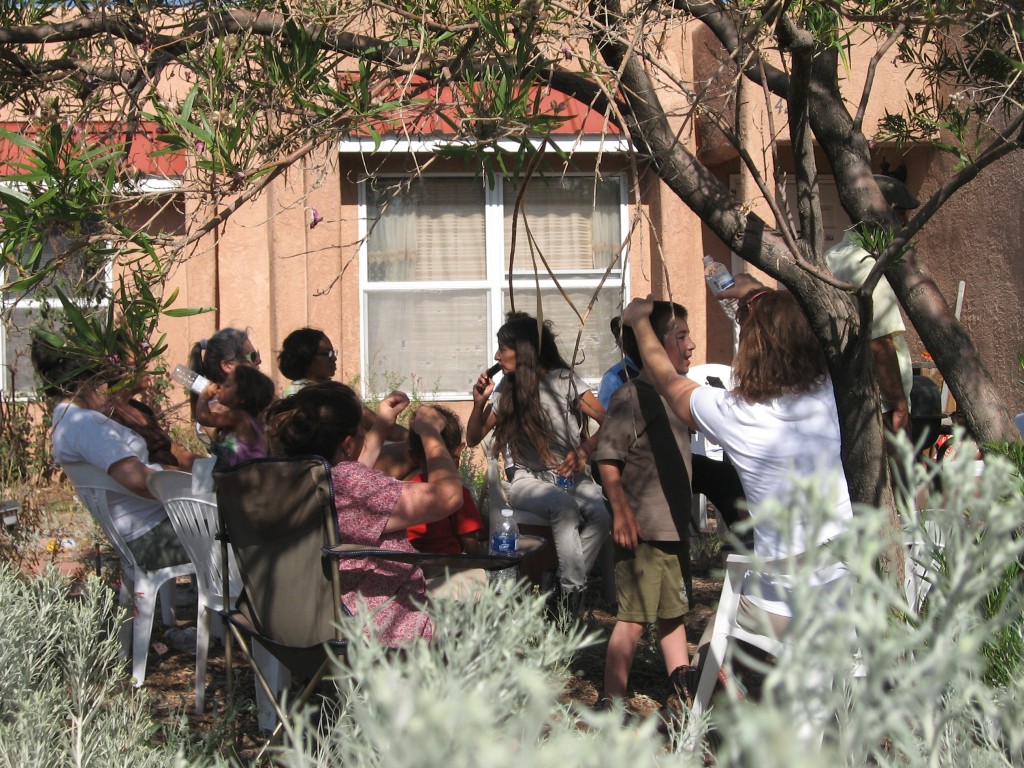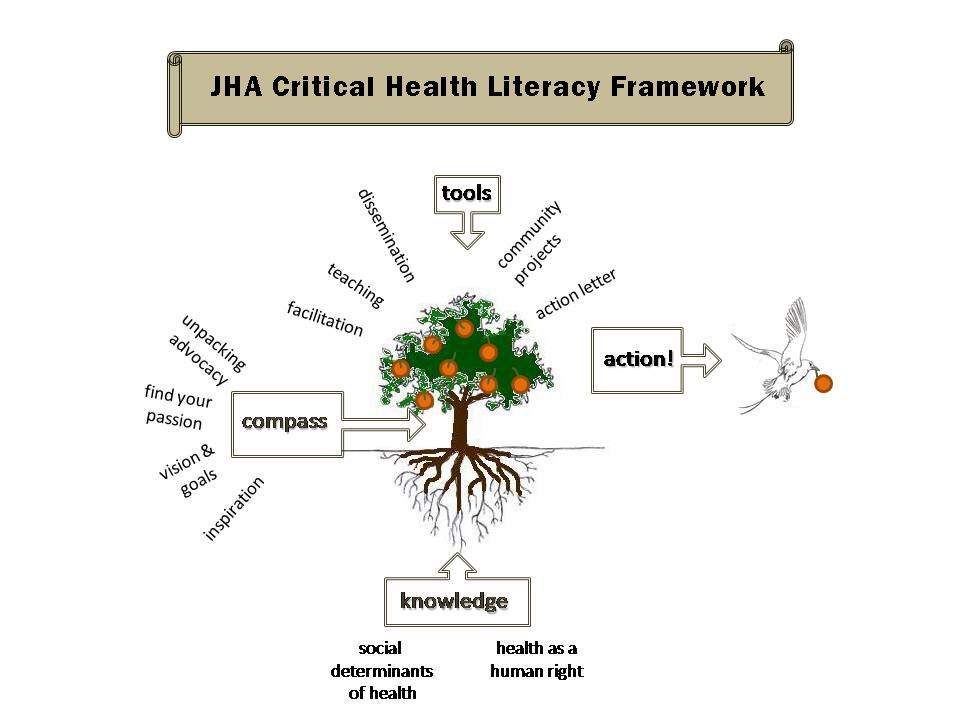
What is Critical Health Literacy?
 Critical Health Literacy is an individual’s understanding of the Social Determinants of Health combined with the skills to take action at both the individual and community level. “Health promotion is the process of enabling people to increase control over, and to improve, their health” according to the Ottawa Charter for Health Promotion. Beyond the knowledge is also an interactive approach that attempts to draw out the knowledge from within the priority population wanting this type of health literacy. Discussion, exercises, and even games are an important part of this health education approach. Lectures are minimal and partnerships important.
Critical Health Literacy is an individual’s understanding of the Social Determinants of Health combined with the skills to take action at both the individual and community level. “Health promotion is the process of enabling people to increase control over, and to improve, their health” according to the Ottawa Charter for Health Promotion. Beyond the knowledge is also an interactive approach that attempts to draw out the knowledge from within the priority population wanting this type of health literacy. Discussion, exercises, and even games are an important part of this health education approach. Lectures are minimal and partnerships important.
In 2000 Nutbeam proposed that health literacy is a key for empowerment. Mogford, Gould, and DeVoght (2010) began to publish on their experience and findings on implementing an empowering form of health literacy. Critical Health Literacy has moved from theoretical to practical. Partnerships between the Mogford & Gould at Just Health Action and health equity workers in New Mexico has started recently and will hopefully lead to a network of practicing Critical Health Literacy communities.
Addressing the Structural Barriers to Health
 Structural barriers to health are often created by underlying assumptions that are often invisible to most people. This makes addressing the structural barriers difficult. Critical Health Literacy is one approach to draw out those assumptions. Community-Based Participatory Research is another method to look at barriers to health.
Structural barriers to health are often created by underlying assumptions that are often invisible to most people. This makes addressing the structural barriers difficult. Critical Health Literacy is one approach to draw out those assumptions. Community-Based Participatory Research is another method to look at barriers to health.
The best approach would involve affected communities and policy-makers to sit at the tables as equals and determine the barriers and address them. This is not often how things work in real-life despite best intentions. Health extension workers are often challenged with dealing with this barrier in order to address the structural barriers to health. Health education and communication becomes an important skill. Often health extension workers are called upon to help communities challenge barriers with or without initial policy-maker support. A good foundation in health promotion is very helpful in these situations.
Being able to improve the critical health literacy of decision-makers is important to reduce structural barriers. Being able to provide critical health literacy and work with a community-based approach is often vital in addressing structural barriers to health. Strong support from leadership in any organization taking on health extension is critical for the success of addressing barriers to fair opportunities for health.
Cross-Sectorial Partnerships for Addressing Determinants of Health
 Partnerships between sectors creates opportunities that would otherwise go unnoticed. Recently there have been studies that show some correlation between air pollution and diabetes. It may be that traffic patterns have an interaction with the body in a way we are just beginning to understand. While we know that transportation choices impact physical activity, and we know that particulate matter impacts our ability to breath, being able to understand that air pollution may influence how we process insulin can create new partnerships.
Partnerships between sectors creates opportunities that would otherwise go unnoticed. Recently there have been studies that show some correlation between air pollution and diabetes. It may be that traffic patterns have an interaction with the body in a way we are just beginning to understand. While we know that transportation choices impact physical activity, and we know that particulate matter impacts our ability to breath, being able to understand that air pollution may influence how we process insulin can create new partnerships.
Related Literature & Tools

“Closing the Gap in a Generation: Health Equity through Action on the Social Determinants of Health”

“Health literacy as a public health goal: a challenge for contemporary health education and communication strategies into the 21st century”

“Teaching critical health literacy in the US as a means to action on the social determinants of health”
Other Useful Tools:





